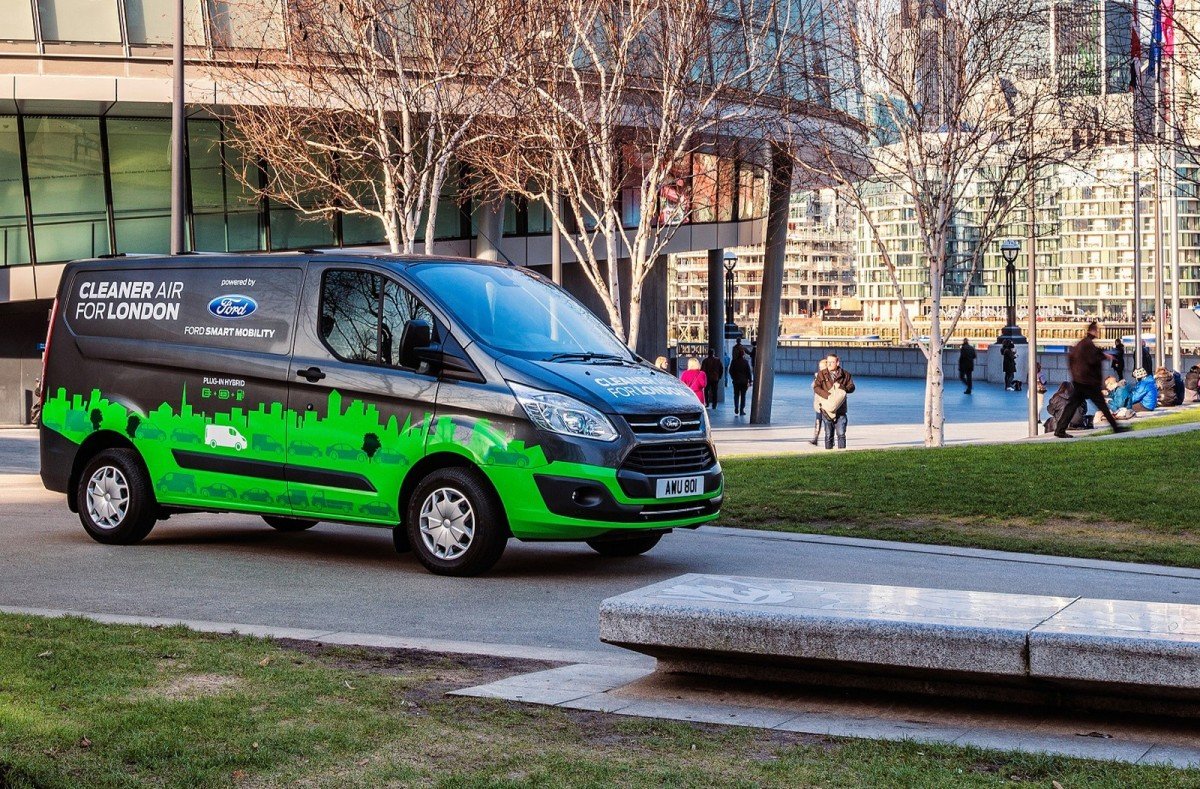
London, Stockholm or Milan already have it and many other cities are considering the introduction of a city toll. Plug-in hybrids with their combination of combustion engine and electric motor have proven themselves in a recent field test in the UK’s capital in terms of environmental protection. That was to be expected. But does this technology have a future?
Three months after the introduction of the “Ultra Low Emissions Zone” in London, Ford has published the results of a one-year field test. The Ford Transit covered a total of 240,000 kilometers. 75 percent of the routes in London’s city center was completed in emission-free electric mode.
Mainly Electrical – Without Any Charging Stations
The result comes as no surprise: hybrid plug-ins can significantly reduce emissions in urban areas – without the need for new, comprehensive charging infrastructure. The petrol engine on board was used comparatively little in practice, although the tested vehicle models only provide up to 50 kilometers of pure electric range. The advantage of the small-sized batteries is that the interior and the charging capacity of the vehicle are hardly affected. The additional 1-litre petrol engine then provides a further 450 kilometers of range.

Looking at the mere numbers: In London, around 280,000 journeys are made with commercial vehicles on a normal weekday, which corresponds to 13 million driven kilometers. Light commercial vehicles account for 75 percent of inner-city freight traffic. If these vehicles were to cover 75 percent of the distance purely electrically, only about 6 million kilometers of the 13 million kilometers would remain which are covered by combustion engines.
Phased-out Model?
The downside of plug-ins: Even now, more than 20 years after the market launch of the first large series hybrid vehicle, the Toyota Prius, they seem to live in the shadows, at least concerning the market segment of light commercial vehicles. Even Ford did not announce the availability of the tested Transit version until the end of 2019. Although VW pointed out as early as 2015 that the T6 was technically ready, the customer was still rather hesitant, especially in the price-sensitive commercial vehicle market. In the current VW configuration, there are many purely electric models, but not a single hybrid transporter. The Renault Kangoo was once available as a hybrid version. In the meantime, Renault just promotes the all-electric transporter model. And the newly introduced Opel Zafira Life, which competes in the minibus and van class, is initially powered exclusively by diesel engines. Pure-electric units will not follow until 2021.
More Expensive but still Cheap?
Usually, plug-in hybrids are more expensive than their thoroughbred colleague models. Of course, the twin-pack diesel and electric propulsion unit have its price. But anyone who has to offset the purchase against the costs of a city toll will begin to wonder. Those who regularly have to drive within the Ultra Low Emission Zone in London with a combustion engine and up to 3.5 tons, will have to pay 23 euros a day. The hybrid may well cost one or two thousand euros more yet still pay off in the end.
